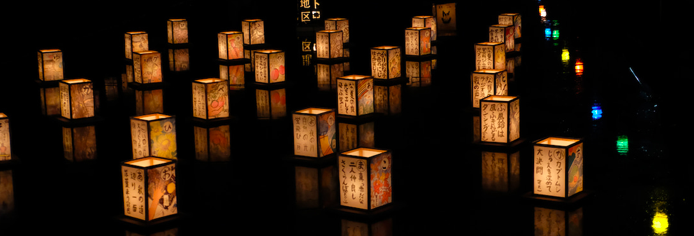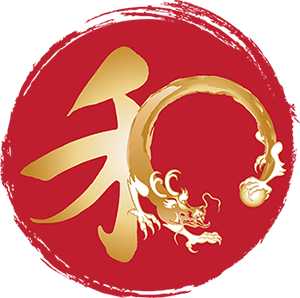READING TIME: 5 MINUTES.
What is O-Bon
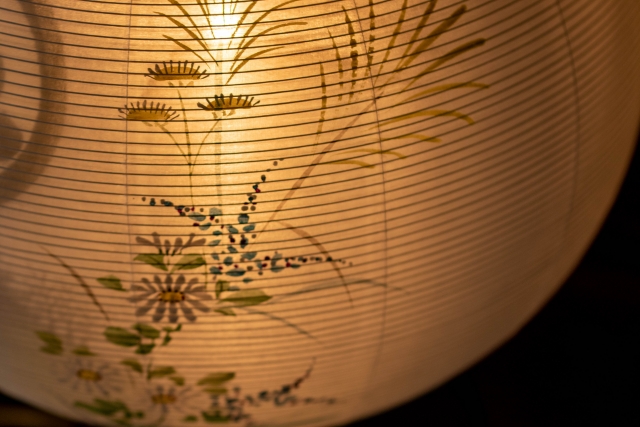
O-Bon Lantern
Today, August 13th marks the beginning of O-bon, one of the most important spiritual and secular events in Japan. The festival traces its origin in ancient Buddhist and Confucian beliefs according to which the spirits of the dead return to their earthly homes on August 13, stay for three days, and then depart for heaven again on the night of August 15th. In present days this religious festival has transformed into a time for family reunions when people return to their hometowns to attend to the ancestral graves and give prayers and welcome the spirits of the diseased, but also to be together with their families, enjoy the celebratory feast and renewal of family bonds..
Preparing for the festival
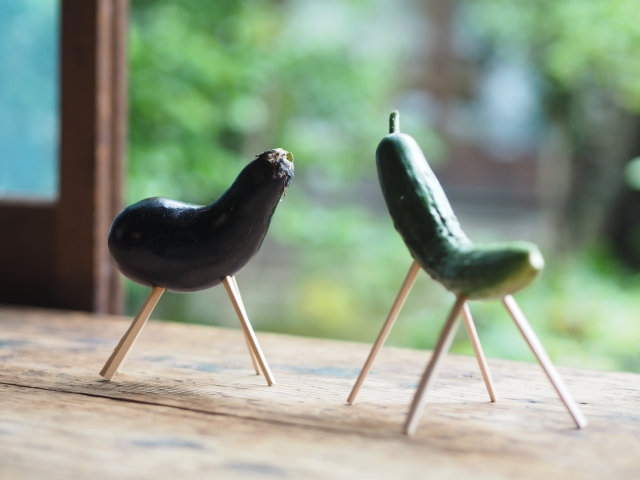
Shorouma Spirit Horses
There are many preparations and traditions associated with O-bon. First of all the family must ensure that the ancestral spirits find their ways home. The family butsudan altar is decorated with colorful lanterns to give the spirits guiding light and often a big lantern is hung at the entrance to the house too. They also make two animal figurines – one from a cucumber and the other from an eggplant that are called shorouuma (spirit horses in Japanese). The cucumber horse is meant to bring the ancestor spirits swiftly home while the eggplant cow is supposed to slow down their return to heaven so they can stay longer in our world. The sturdy cow also helps carry the gifts the spirits received from their families.
Saying Good-bye
With the lanterns lit and the O-bon feast laid on the table the family welcomes the spirits back home and celebrates their return. Then on the third day of the festival they are sent back home with gifts of food (yes, special obento boxes made of persimmon leaves and filled with cut eggplant and uncooked rice are being prepared to sustain the spirits on their way back to heaven!) This is accompanied by a powerful and very poignant ceremony, called shoro-nagashi or flowing the spirits. Shoro-nagashi is especially important to those who have lost a loved one in the previous year because the ceremony ensures that their spirit finds its way to heaven. I witnessed the ceremony in my husband’s home town in Kyushu many years ago when we did it for his dad. I can truthfully say it was one of the most moving rituals I have ever experienced.
Shoronagashi – flowing the spirits
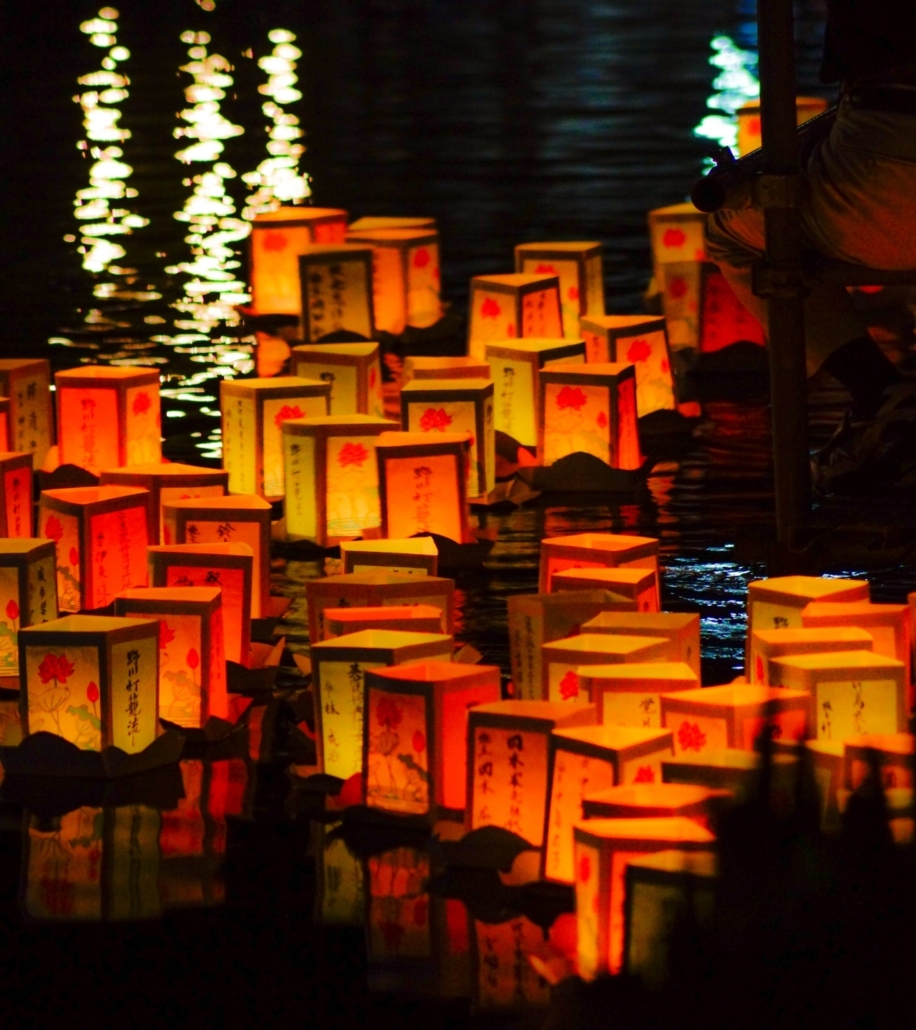
The ceremony is always held on the banks of a river. The family of the diseased prepares a small ship or a float with a lantern on it. Everyone gathers on the banks of the river – usually, the surrounding city lights are turned off, so the river is in complete darkness. In the shoro-nagashi I witnessed there was chanting coming from the middle of the river – obviously, there was a boat there we couldn’t see. The chanting was answered by the drums and chanting of the priests on the river bank. This ‘dialogue’ between the two groups – the seen and the unseen, went for a while until the time to release the spirits came.
The floating lanterns with their candles lit were placed in the water and the tiny lights were slowly carried away by the current until they disappeared in the darkness. It was a time of farewell and of letting go, both sad but also freeing with the closure it brought. The living could let go and focus back on their lives while those who had passed were safely on their way to heaven, carrying with them the gifts of remembrance and love.
Bon dances
Even if the festival is about celebrating those who have passed, O-bon is not at all a sad occasion. A big part of it about rejoicing and celebration, which is so well expressed in the famous Bon dances, or Bon-odori in Japanese. There is an interesting legend about this tradition came to be: one of Buddha’s disciples lost his beloved mother and was very sad that she couldn’t find release from the human realm and was stuck in limbo between the worlds. The Buddha advised him to ask some monks to pray for her release which he did. With the help of the prayers, the disciple’s mother could find release and transitioned to heaven. When her son saw that he danced in joy that she was free from earthly suffering and there we had our first Bon dance!
My first Bon dance
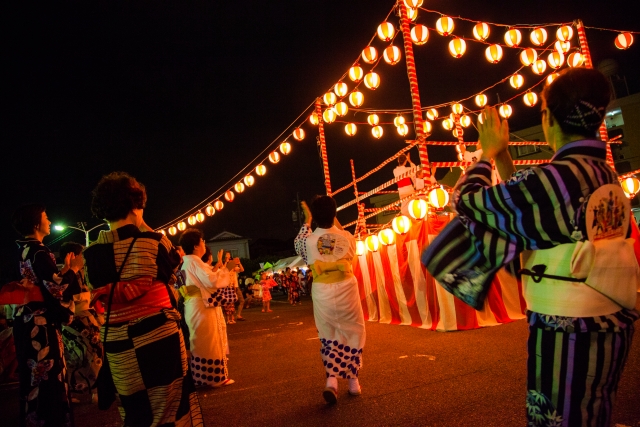
Bon-Odori Dance
When I first saw Bon-odori, which was some 35 years ago, I couldn’t believe my eyes: my usual, everyday busy world populated by serious people in a hurry to get somewhere had disappeared and in its place was a Japan I knew from old paintings and stories.
Our neighborhood park was transformed into a magical world of brightly lit lanterns, fun stalls selling food, drinks, and toys for the kids and people clad in colorful summer kimonos – yukata, dancing to the rhythm of drums and folksongs. It was such an unforgettable thing to meet my friends and neighbors there, to dance and laugh and enjoy the hot, humid summer night. When my children were born going to Bon-odori was our favorite part of the summer and it is something I love to this day. Hearing the traditional Bon-odori songs puts into a festive mood right away.
Bon dances around Japan
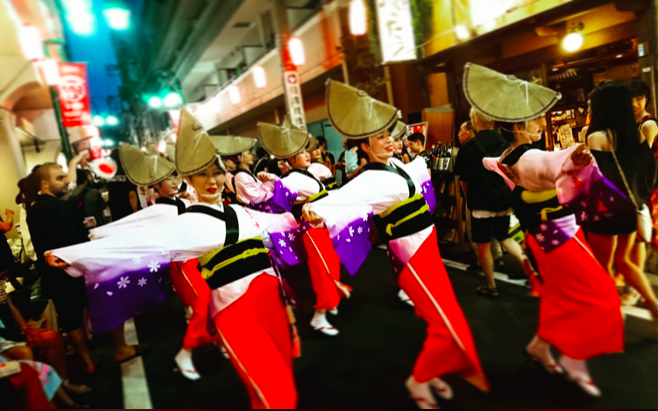
Awaodori Dance
Every region has its own dances and Bon-odori songs with some of the more famous ones being the Awa-odori from the island of Shikoku and the Tanko-bushi from the southern island of Kyushu. Below is a link to a video where you can see what a lively, fun event a Bon Dance is like – this one is from central Tokyo where a boulevard was closed so people could join and enjoy the dance. Unfortunately this year all events are canceled, or I would have loved to show you our local shrine dance which is smaller but not less fun for the neighborhood.
* The Spirit of Japan Tours organizes private and group tours to temples and sites where you can experience the richness of Japan’s spirituality and traditions. Please, message us for more information about our future tours.

